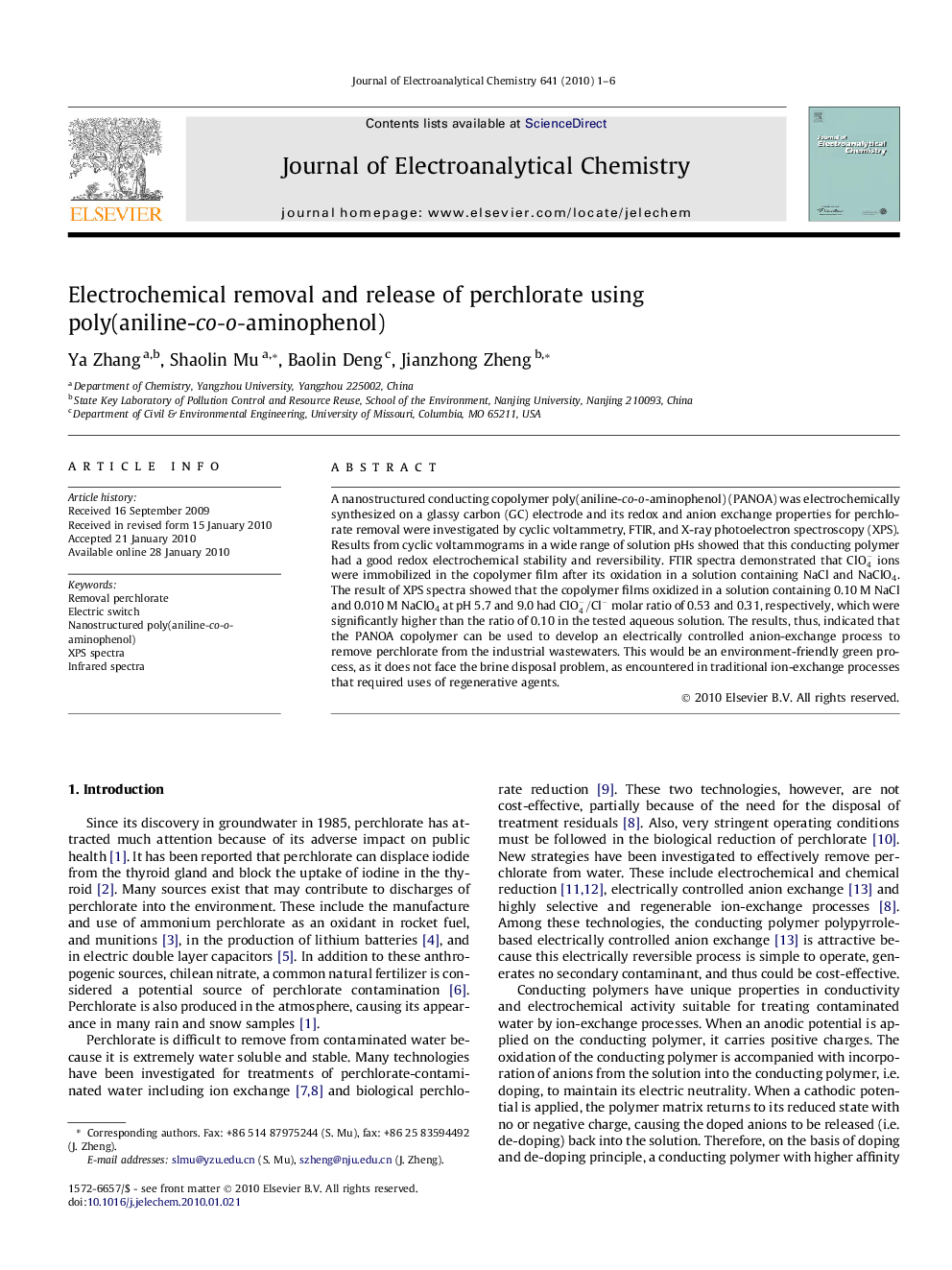| Article ID | Journal | Published Year | Pages | File Type |
|---|---|---|---|---|
| 220070 | Journal of Electroanalytical Chemistry | 2010 | 6 Pages |
A nanostructured conducting copolymer poly(aniline-co-o- aminophenol) (PANOA) was electrochemically synthesized on a glassy carbon (GC) electrode and its redox and anion exchange properties for perchlorate removal were investigated by cyclic voltammetry, FTIR, and X-ray photoelectron spectroscopy (XPS). Results from cyclic voltammograms in a wide range of solution pHs showed that this conducting polymer had a good redox electrochemical stability and reversibility. FTIR spectra demonstrated that ClO4- ions were immobilized in the copolymer film after its oxidation in a solution containing NaCl and NaClO4. The result of XPS spectra showed that the copolymer films oxidized in a solution containing 0.10 M NaCl and 0.010 M NaClO4 at pH 5.7 and 9.0 had ClO4-/Cl- molar ratio of 0.53 and 0.31, respectively, which were significantly higher than the ratio of 0.10 in the tested aqueous solution. The results, thus, indicated that the PANOA copolymer can be used to develop an electrically controlled anion-exchange process to remove perchlorate from the industrial wastewaters. This would be an environment-friendly green process, as it does not face the brine disposal problem, as encountered in traditional ion-exchange processes that required uses of regenerative agents.
